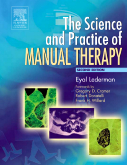|
|
|
| |
 |
|
|

|
 推薦指數:
推薦指數:





|
|
- 內容介紹
|
The Science & Practice of Manual Therapy, 2nd Edition - Physiology, Neurology and Psychology
By Eyal Lederman
336 pp., 160 ills., Copyright 2005
ISBN:0443074321
Description
This practical book offers an extensive examination of how manual therapy (MT) techniques work, and how to match the most suitable techniques to different conditions. Drawing on evidence-based research, it explores the physiological, neurological and psychophysiological responses of the human body to MT techniques. In doing so, it helps MT practitioners deliver a more effective and safer treatment for a broader range of conditions.
Key Features
Comprehensive overview helps provide an understanding of how and why MT techniques work.
Content is written in jargon-free, easy-to-read style, with most terms explained.
Text is enhanced by over 120 diagrams, photographs and tables.
Manual pain relief is extensively discussed throughout the book.
Section 1 examines the direct effects of manual therapy on connective tissue and muscle physiology, examining how MT can help assist repair and adaptation processes in these tissues.
Section 2 examines the effect of MT on the neuromuscular system, identifying conditions where neuromuscular dysfunctions can be treated by MT.
Section 3 examines the psychological, emotional and behavioral impacts of MT, in addition to the psychophysiological affects of MT, including psychomotor, neuroendocrine, and autonomic responses.
More than 1,000 references relevant to manual therapy are included, making this an essential source book for students and researchers of MT.
New to this Edition
Content is completely rewritten, extensively updated and expanded, adding new research material, novel clinical approaches, and demonstrations of new techniques and assessments.
Pain coverage is expanded.
More information is included on the responses of muscle to mechanical stimuli when applying MT techniques.
Table of Contents
1. Introduction SECTION 1 The effect of manipulation on the tissue organization 2. Manual therapy in the tissue dimension 3. Assisting repair with manual therapy 4. Affecting fluid flow with manual therapy 5. Assisting adaptation: manual stretching 6. Pain relief by manual therapy: the local tissue dimension 7. Overview and summary of Section 1 References SECTION 2 Neurological organization in manual therapy 8. Manual therapy in the neurological dimension 9. The motor system 10. Proprioceptive stimulation by manual therapy techniques 11. Affecting the lower motor system with manual therapy 12. The adaptive code for neuromuscular re-abilitation 13. Abilities, inability and re-abilitation 14. Treating the intact motor system: behavioural and psychomotor dysfunctions 15. Neuromuscular organisation in musculoskeletal damage 16. Re-abilitating the damaged motor system 17. Pain relief by manual therapy – neurological mechanisms 18. Muscle tone 19. Overview and summary of Section 2 References SECTION 3 Psychological and psychophysiological processes in manual therapy 20. Manual therapy in the psychological/psychophysiological dimension 21. Origins of therapeutic potential of touch 22. Psychological influences of manual therapy 23. Psychophysiology of manual therapy 24. Manual therapy in the psychosomatic field 25. Touch as a therapeutic intervention 26. Pain relief by manual therapy: psychological processes 27. Overview and summary of Section 3 References SECTION 4 Overview and clinical application 28. Overview and clinical application of the science
|
|
|

